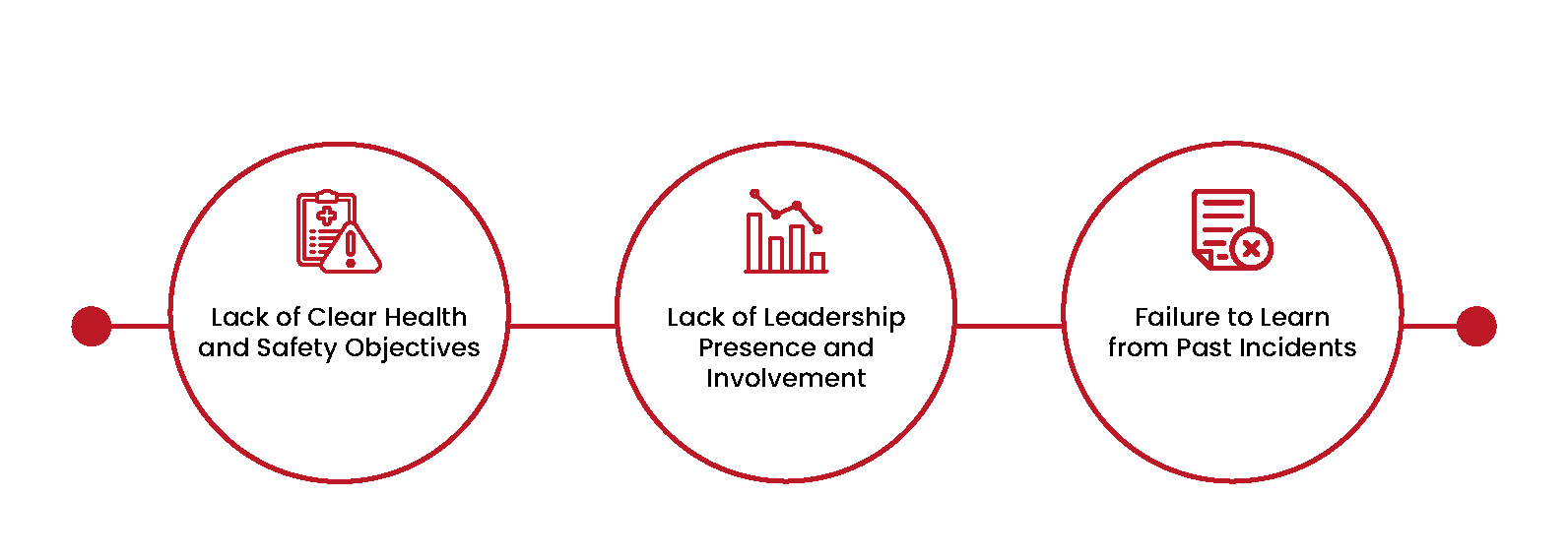MIN READ
Ensuring workplace safety is an essential responsibility of every organization. However, many businesses struggle to effectively prevent accidents, leading to significant consequences.
According to the International Labour Organization (ILO), 2.93 million workers die each year from work-related accidents and diseases, while 395 million non-fatal work-related injuries occur annually. Additionally, workplace injuries cost businesses billions—over $167 billion annually in the U.S. alone, as estimated by the National Safety Council (NSC).
Despite established policies, weaknesses in leadership, unclear objectives, and a failure to learn from past incidents continue to hinder safety initiatives. In fact, studies show that nearly 90% of workplace injuries result from human error, often due to insufficient training or ineffective safety policies.
Below are three primary factors that contribute to organizations’ shortcomings in accident prevention and what can be done to address them.

One of the main reasons behind organizations’ failure to prevent accidents is the lack of clearly defined health and safety objectives. Many businesses do not fully understand the importance of managing workplace safety, often viewing it as a regulatory problem rather than a tactical priority.
Occupational Health and Safety professionals may present moral, legal, and economic arguments for improving workplace safety. However, many business leaders do not find these compelling enough to take meaningful action. Furthermore, many organizations are unaware of their own risk profiles, making it difficult to evaluate the true impact of workplace hazards.
The financial implications of safety are what ultimately motivate leadership to take action. Without clear financial reasoning, health and safety may be viewed unfavorably, leading to minimal resource allocation and a lack of leadership commitment. To change this perspective, organizations must present health and safety as a financial necessity. Leaders should be made aware of the concrete financial consequences of failure, including:
For larger companies, lapses in workplace safety can even lead to a decline in stock value. By making health and safety a financial priority, organizations can promote greater leadership commitment and allocate sufficient resources for stronger safety policies.
Another major issue is the absence of leadership involvement in promoting workplace safety. When leaders fail to understand or prioritize health and safety, they often assign responsibility to others—usually a safety officer or lower-level manager who may also lack clear direction or dedication. In the worst cases, responsibility is shifted to frontline employees, increasing their risk exposure.
In the absence of clear leadership guidance, employees are left to interpret safety standards on their own. This leads to unreliable compliance, improvisations, and increased accountability on workers when incidents occur. Furthermore, when leaders do not comply with safety standards themselves, such as disregarding the use of personal protective equipment, they send a message that safety is not a priority.
To address this, leaders must take a continual role in health and safety by:
Leadership presence and involvement are essential in cultivating a safety-focused culture where employees feel encouraged rather than held responsible.
Many organizations fail to learn from past mistakes, either by disregarding accident reports or failing to enforce essential corrective measures. Mistakes occur in every workplace, but failing to analyze and address them increases the likelihood of repeat incidents.
Even minor workplace incidents, such as slips and falls, are often dismissed as employee carelessness rather than analyzed for root causes. Rather than placing blame on individuals, organizations should:
Many investigation practices fall short because they fail to translate findings into practical solutions. Organizations must ensure that lessons learned from past incidents lead to significant, organization-wide safety improvements.
PECB provides a range of training courses designed to help you efficiently manage your daily workplace responsibilities. One such training course that enhances health and safety management in your workplace is ISO 45001. The schemes of this training course are:
Preventing accidents is not just a regulatory requirement—it is crucial for business success. Organizations that do not set clear safety goals, lack strong leadership engagement, and fail to learn from previous errors will continue to struggle with workplace safety. By integrating health and safety into their financial strategy, promoting strong leadership engagement, and prioritizing continuous improvement, organizations can create safer workplaces while also protecting their financial performance.
About the author
Vesa Hyseni is a Senior Content and Campaigns Specialist at PECB. She is responsible for creating up-to-date content, conducting market research, and providing insights about ISO standards. For any questions, feel free to reach out to her at support@pecb.com.
Share
This website utilizes technologies such as cookies to enable essential site functionality, as well as for analytics, personalization, and targeted advertising. To learn more, read our Cookie Policy and Data Privacy statement.